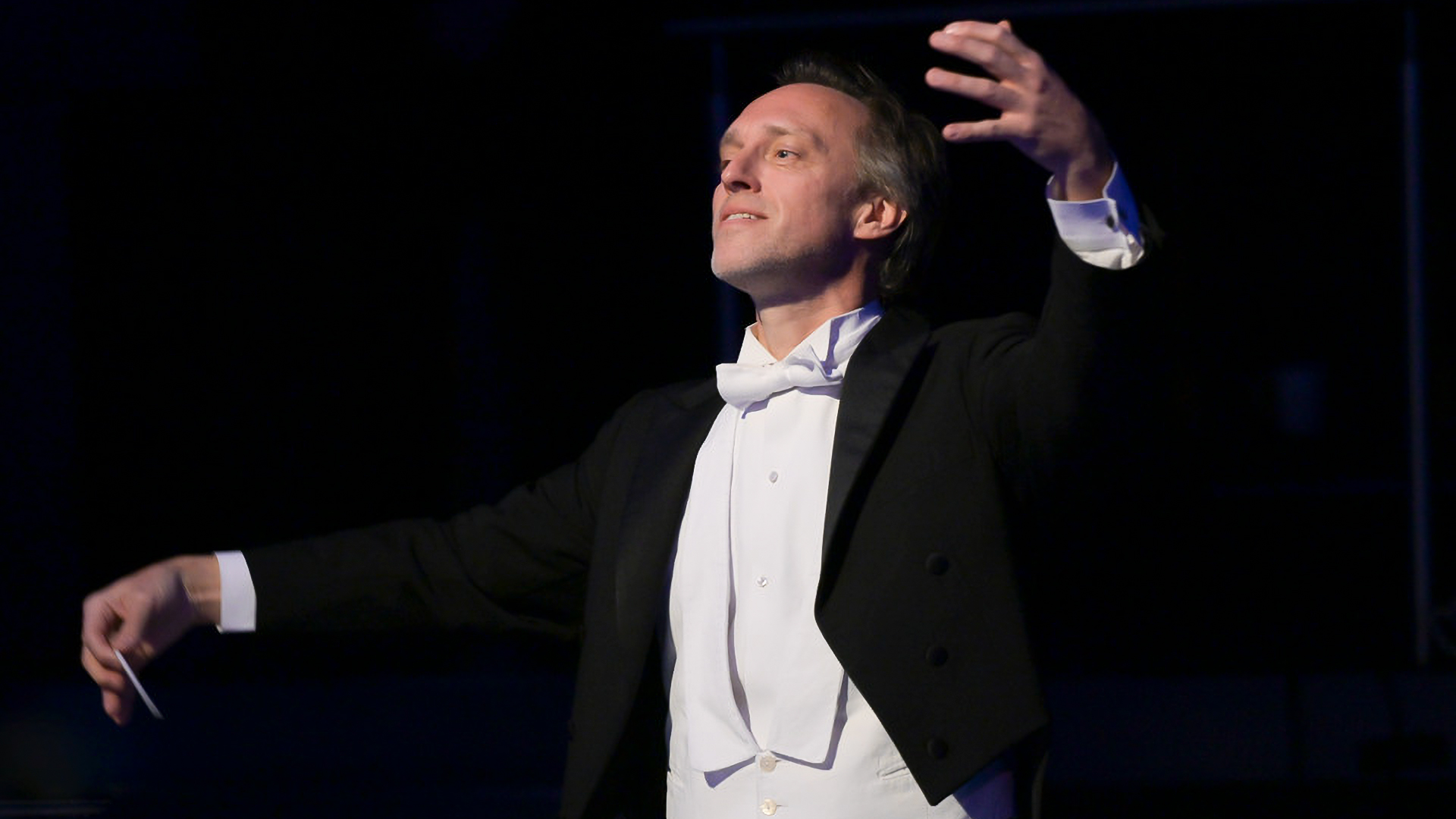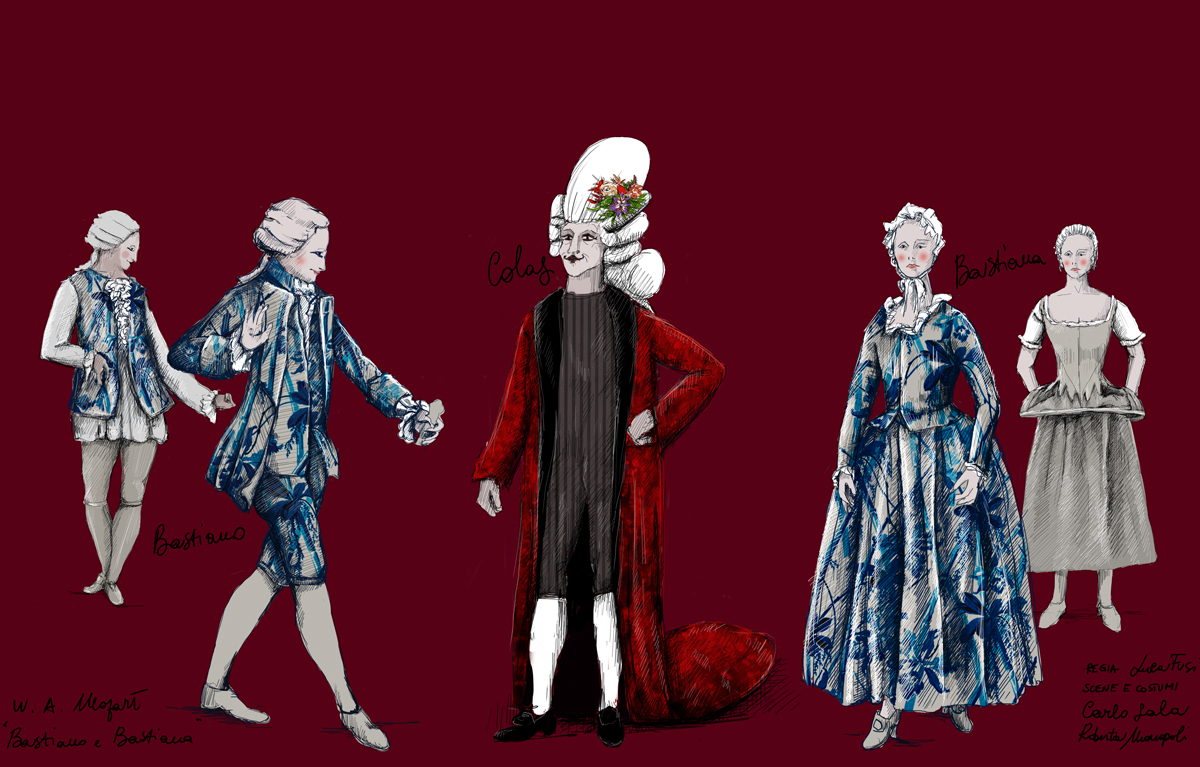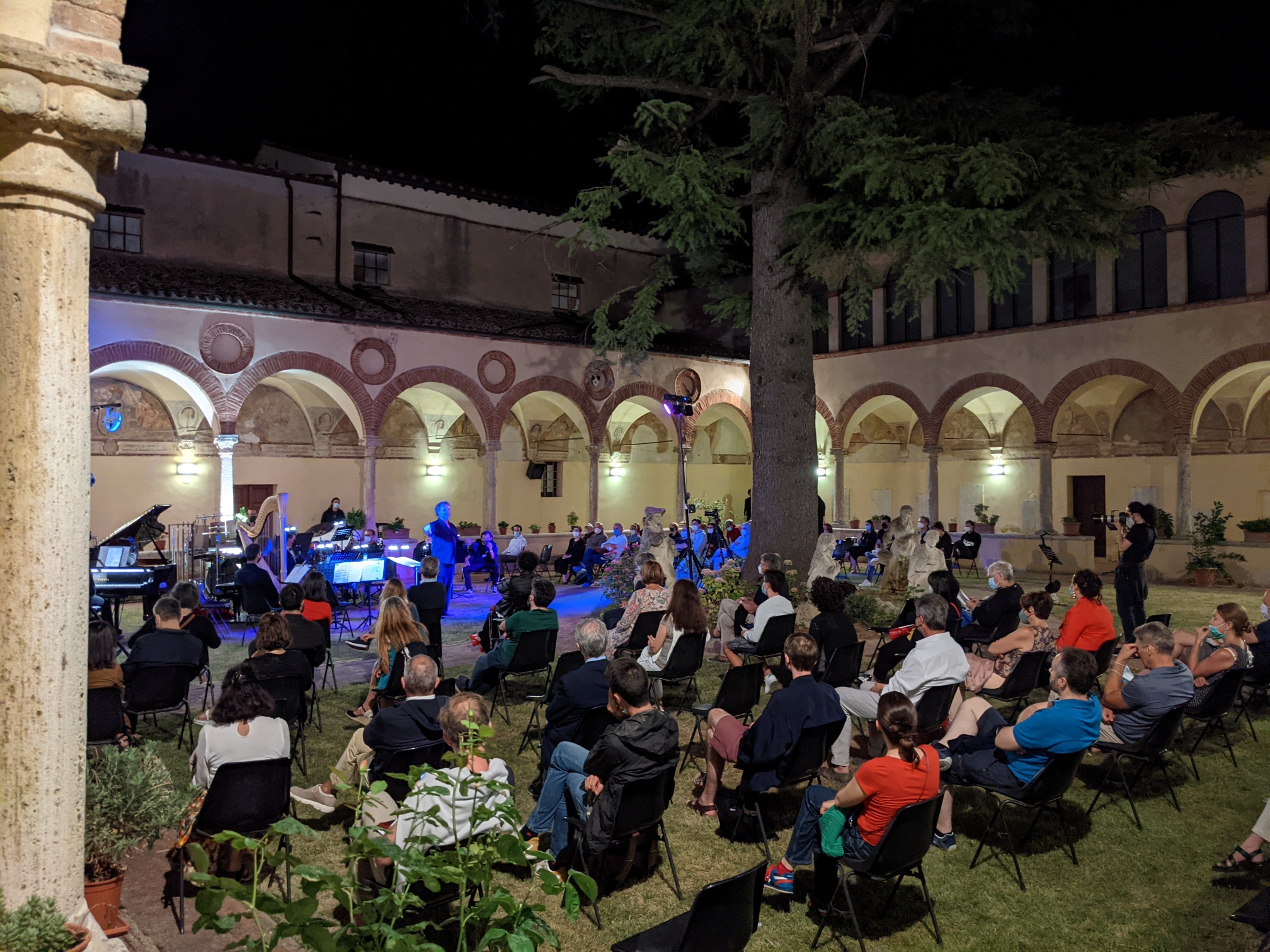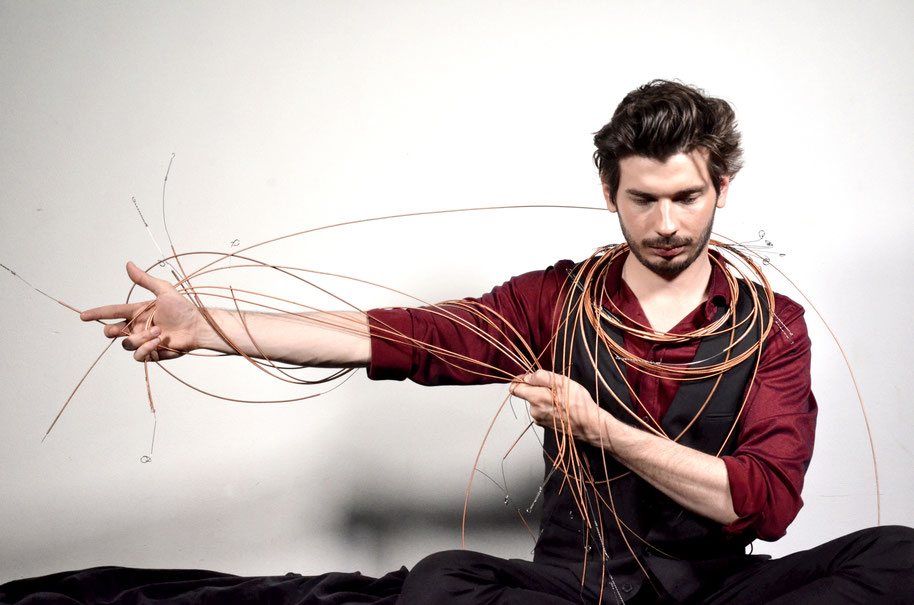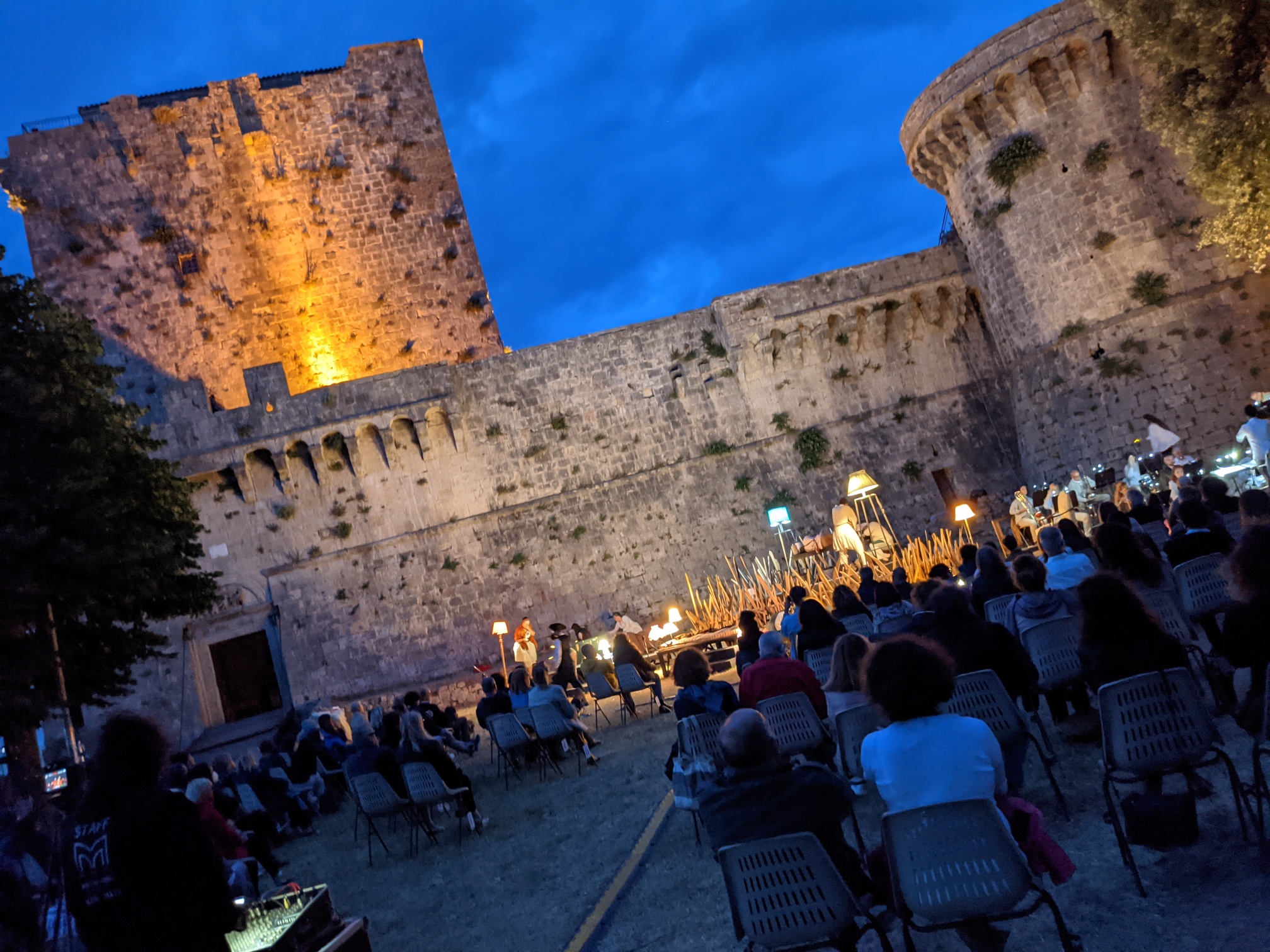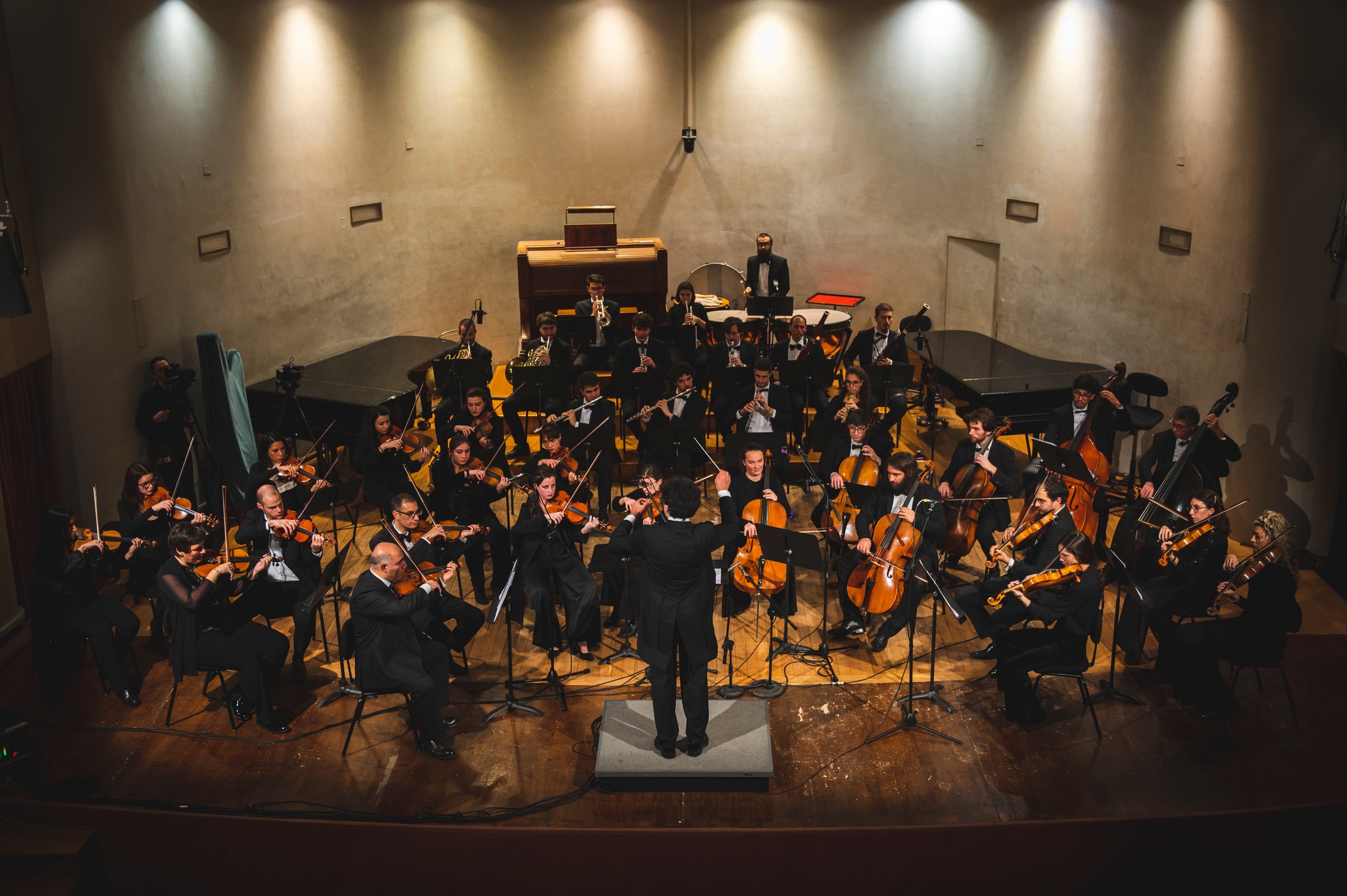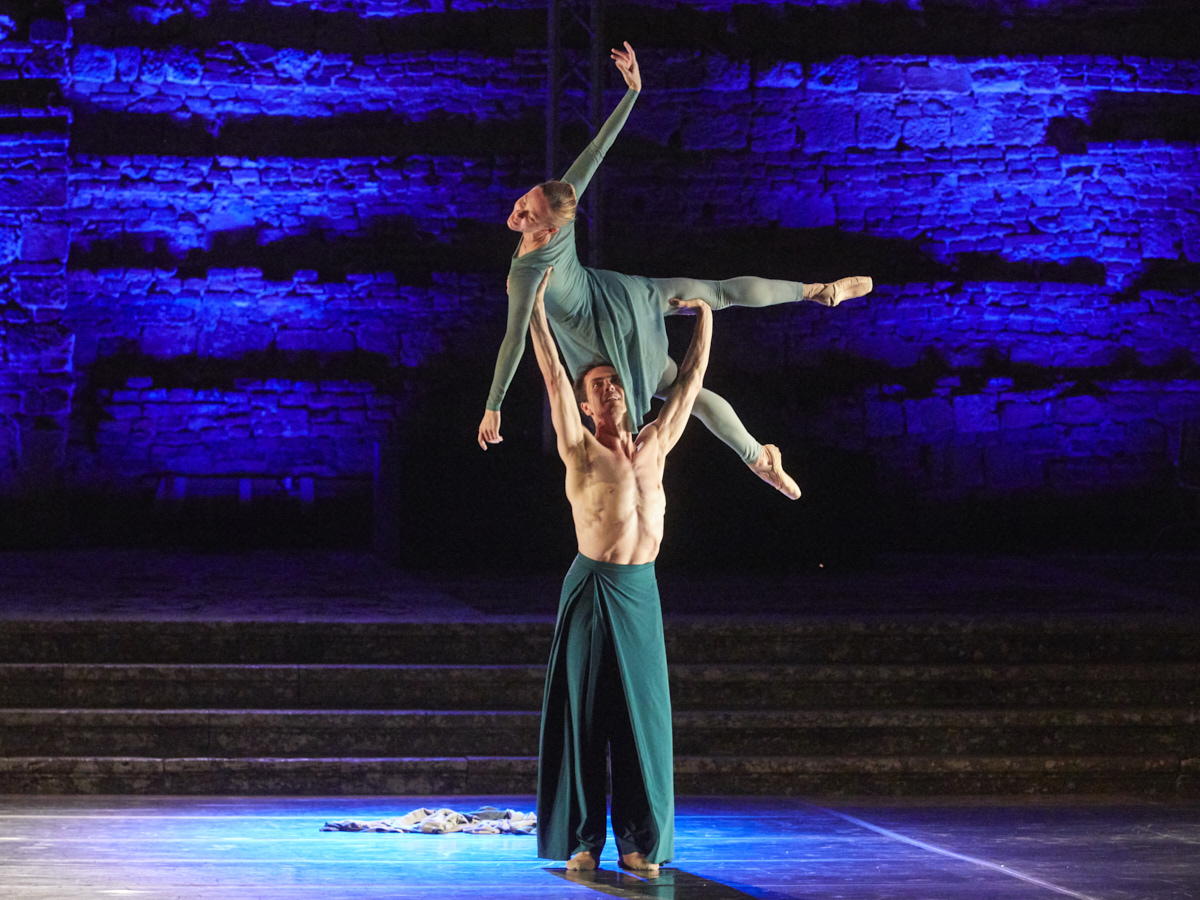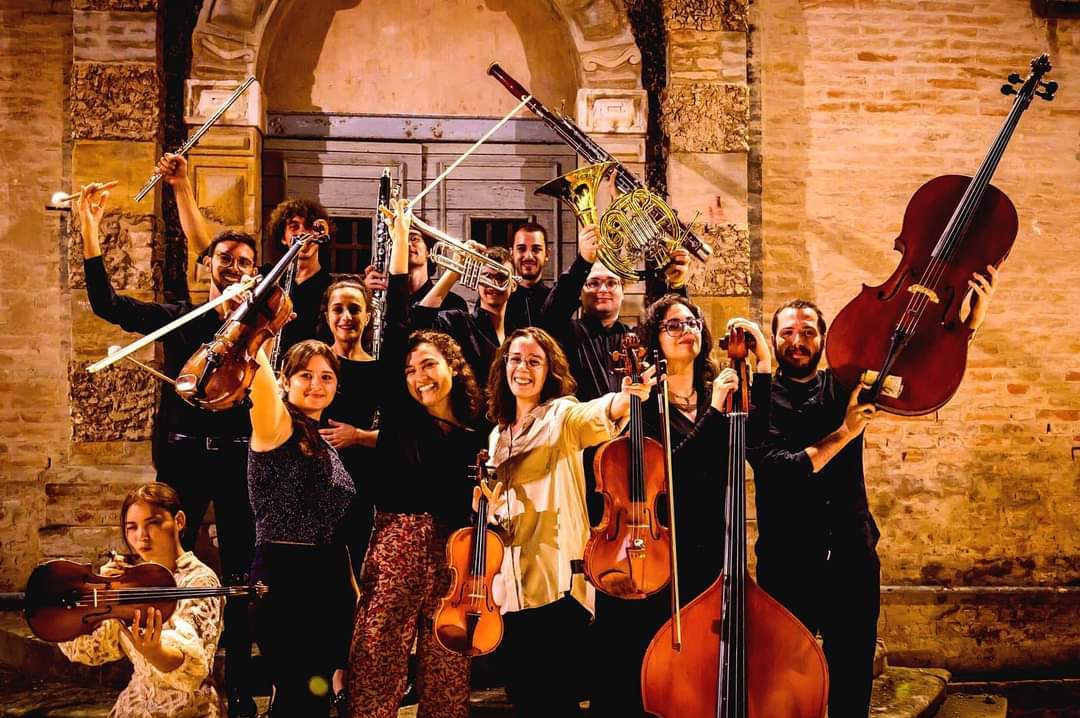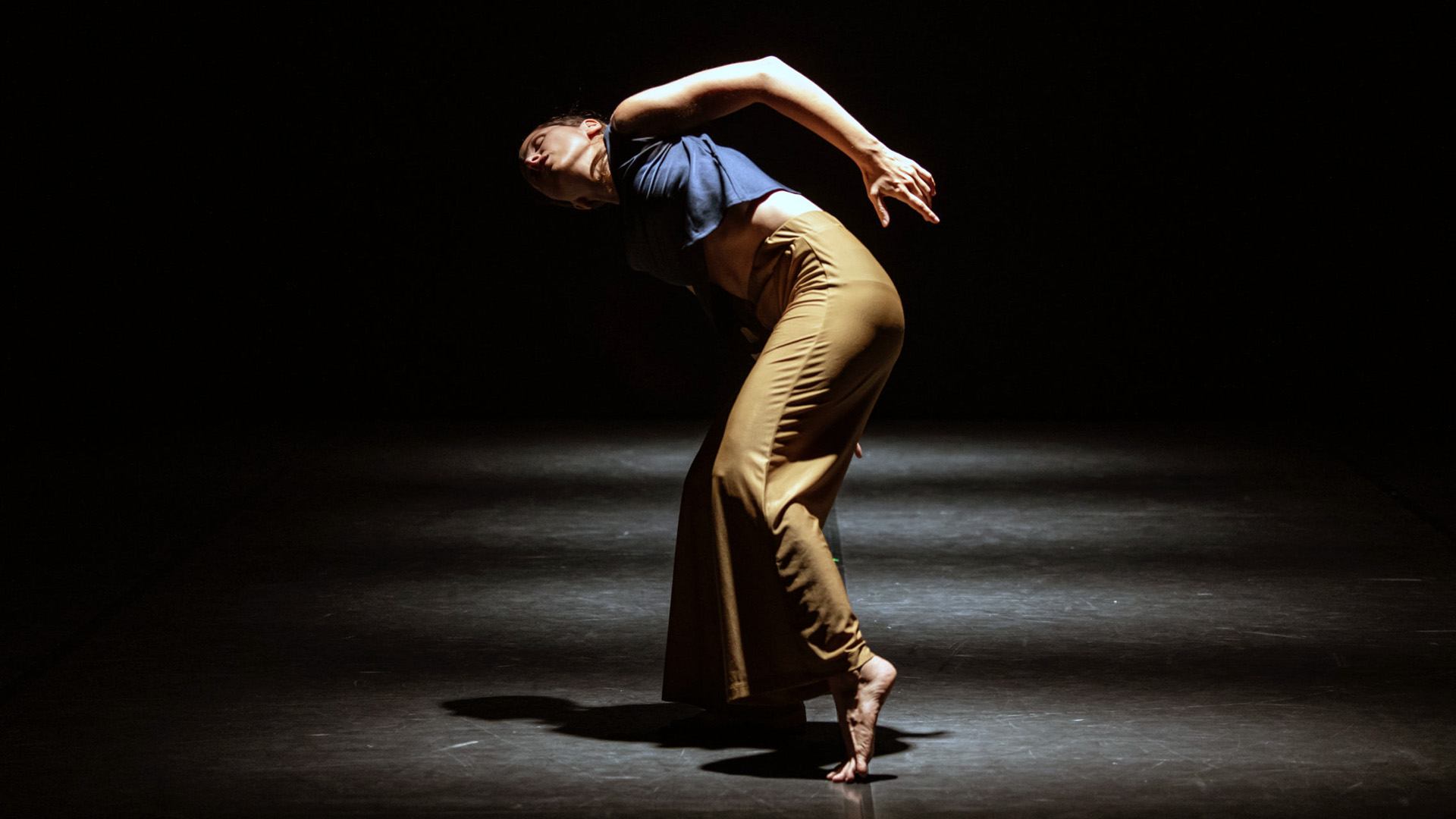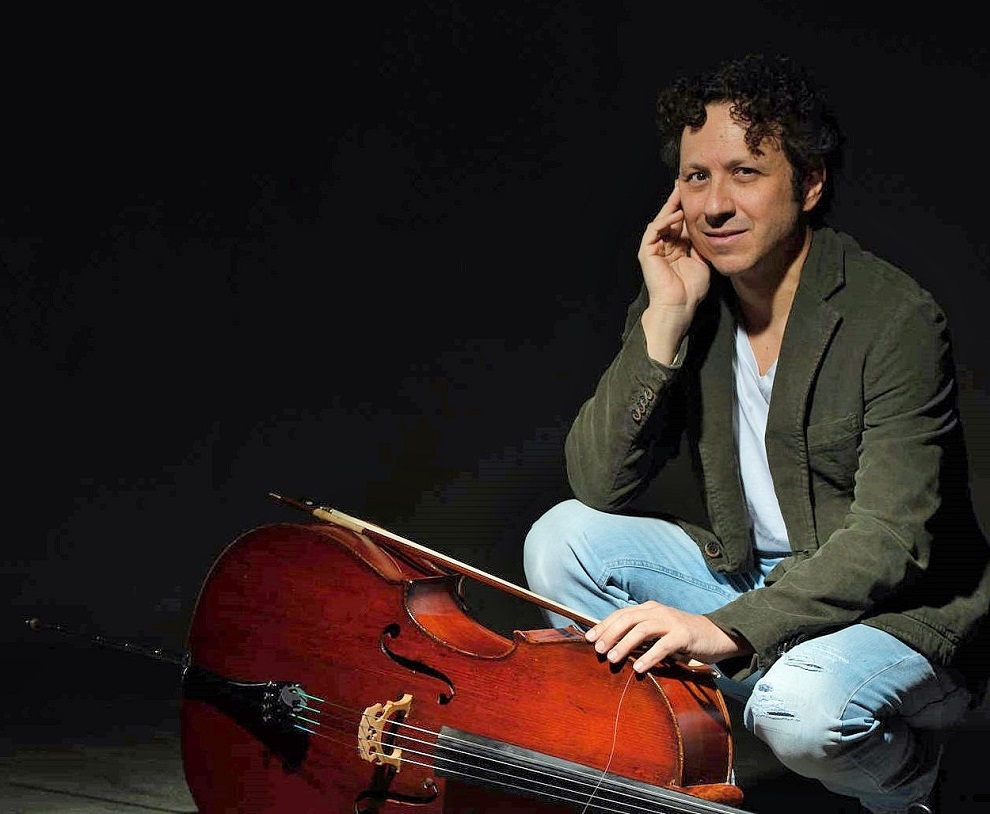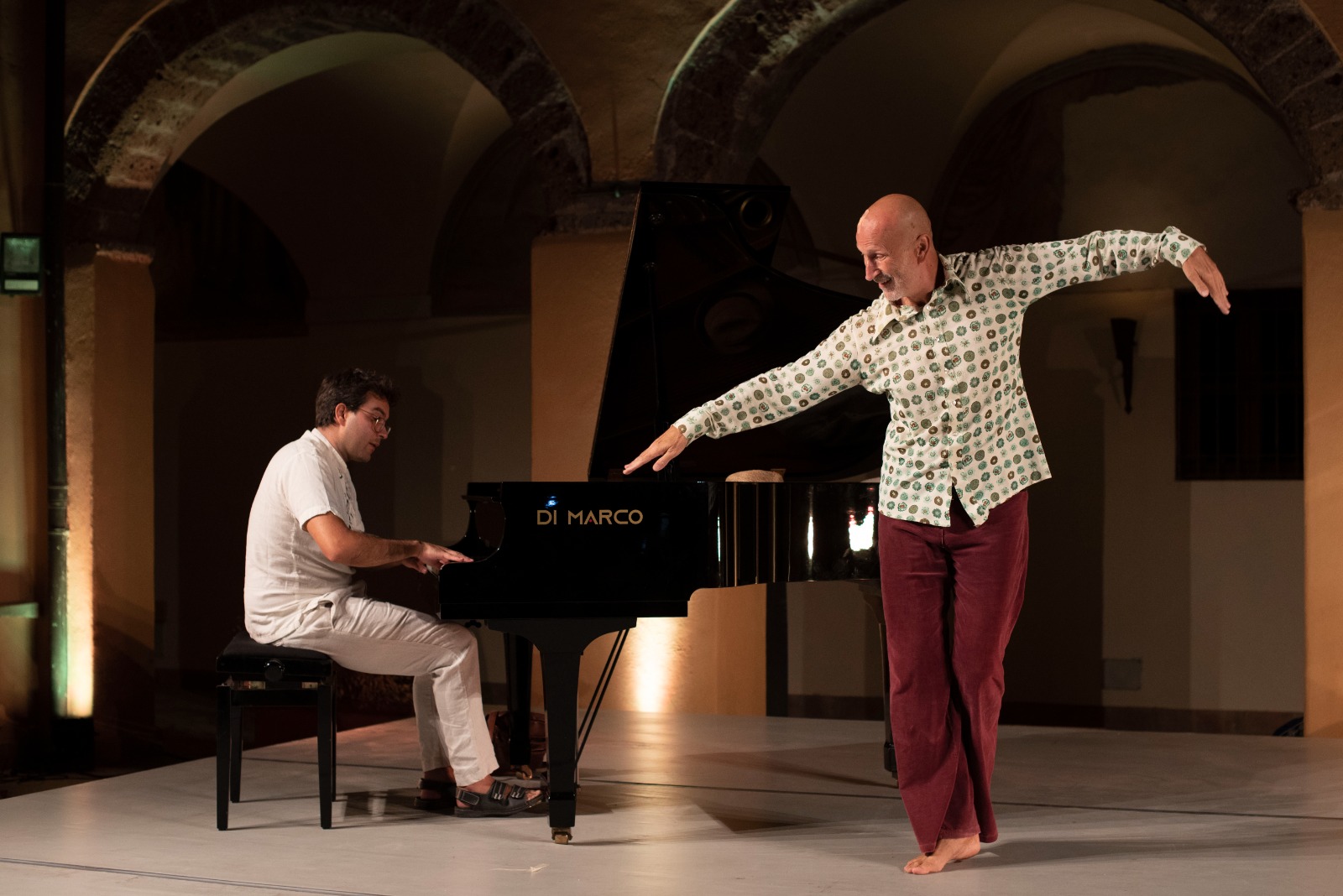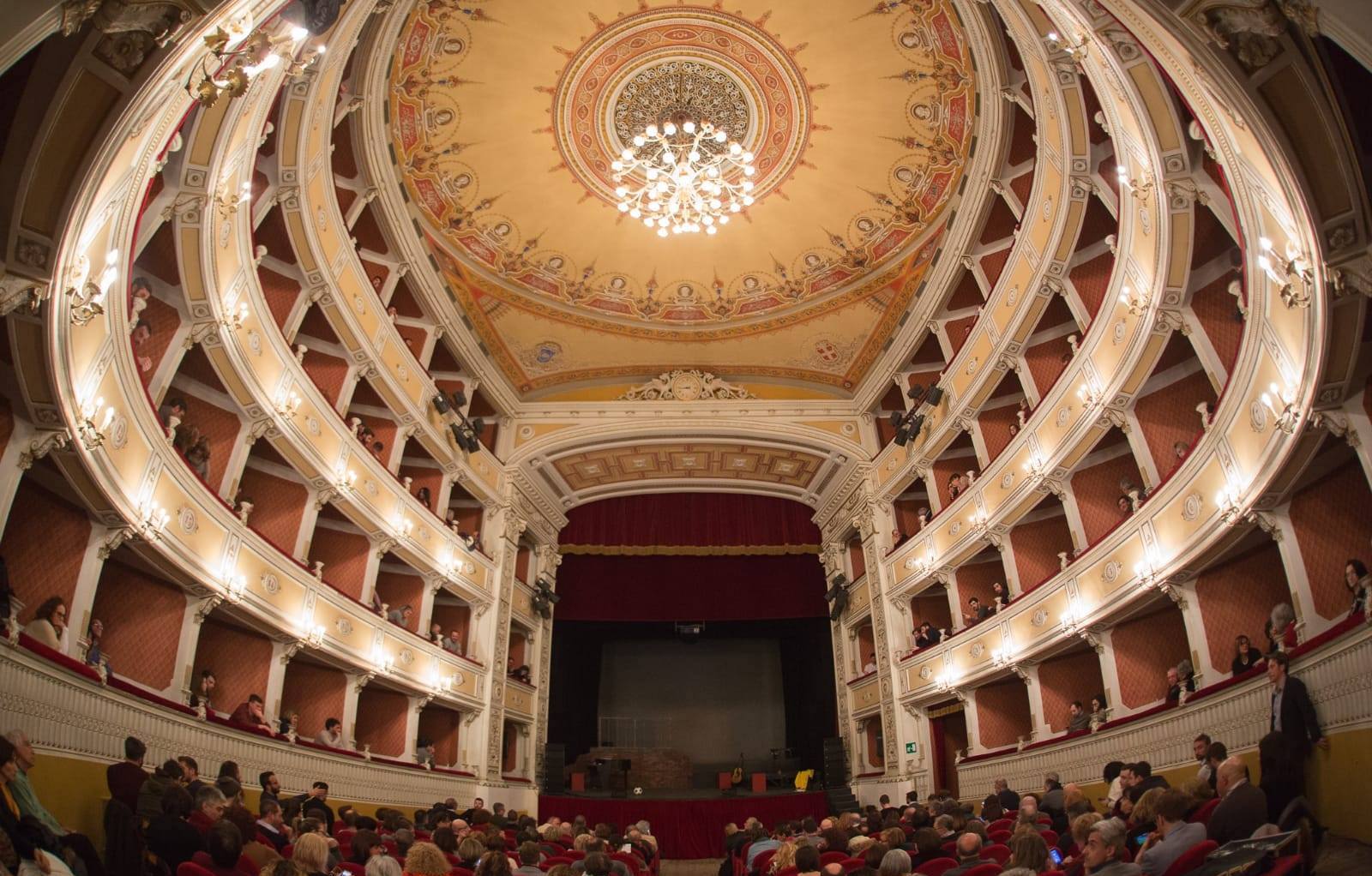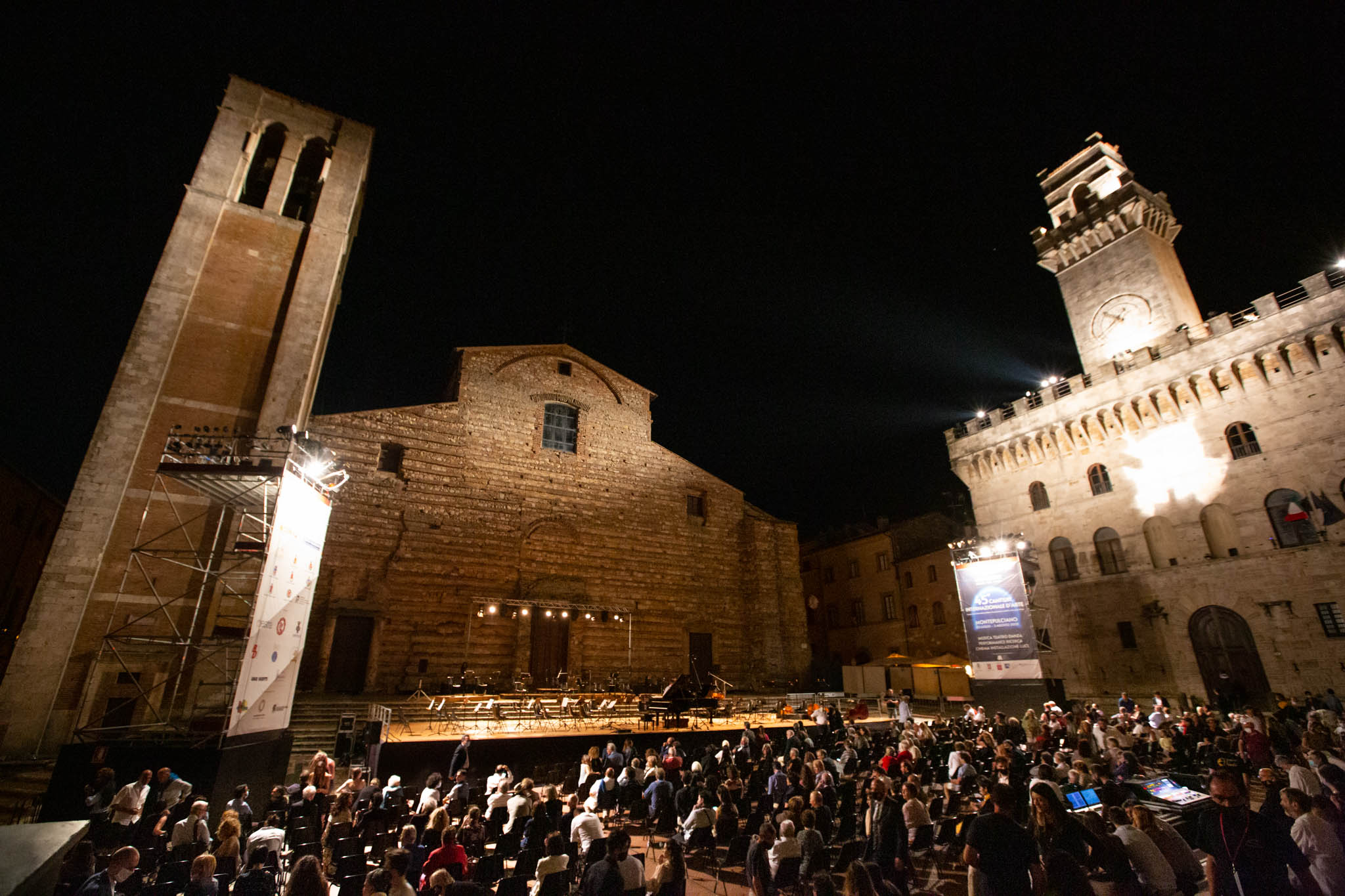PLAIN-CHANT
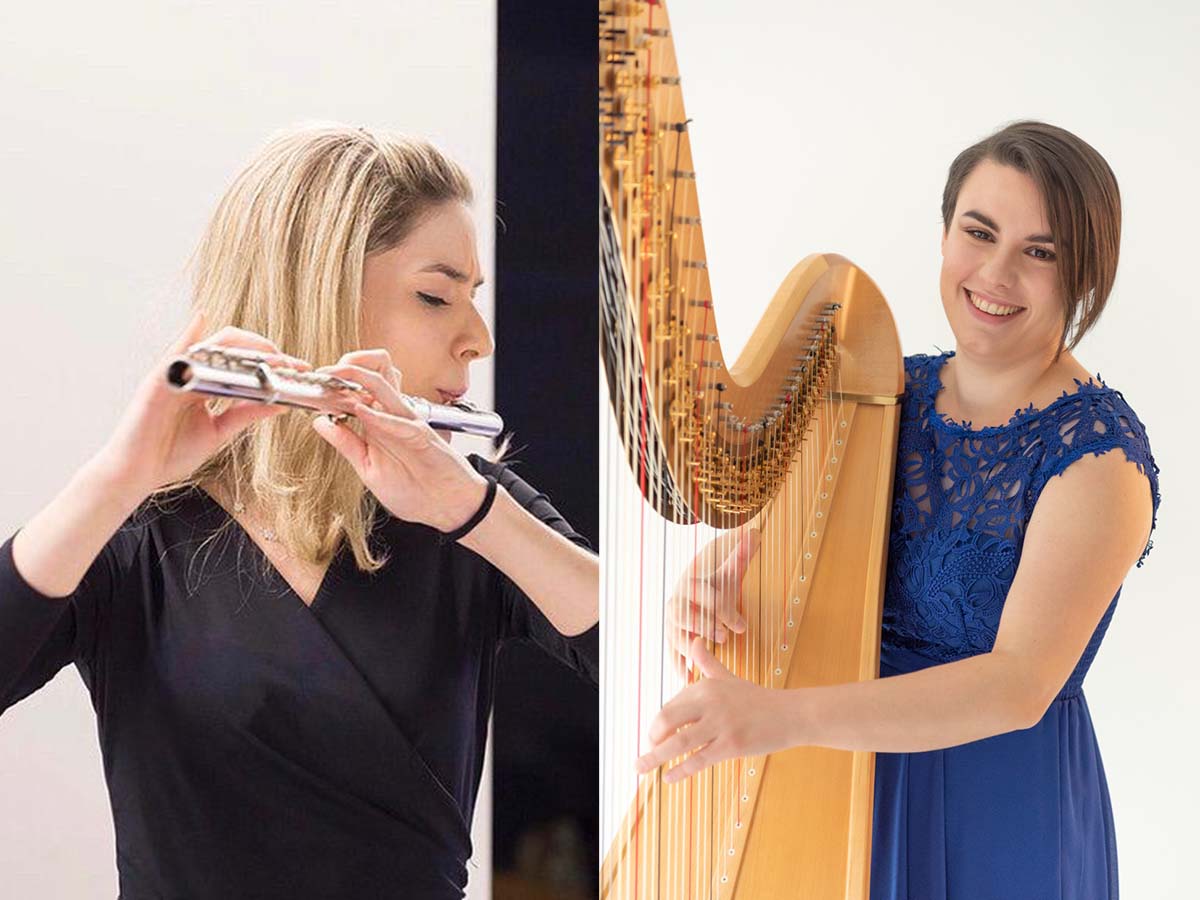
CHIANCIANO TERME - Museo Etrusco
Domenica 23 luglio, ore 21.30
PLAIN-CHANT
Laura Bersani flauto
Francesca Virgilio arpa
PROGRAMMA
Claude Debussy (1862-1918)
Syrinx per flauto solo
Gabriel Fauré (1845-1924)
Une châtelaine en sa tour op. 110 per arpa sola
Erik Satie (1866-1925)
Le Fils des étoiles trascrizione per flauto e arpa di Toru Takemitsu
Louis Andriessen (1939)
Plain-Chant
Nino Rota (1911-1979)
Sonata per flauto e arpa
Allegro molto moderato
Andante sostenuto
Allegro festoso
Nicola Ortodossi (1986)
Isaura per flauto solo
Maurice Ravel (1875-1937)
Pièce en forme de Habanera
Jacques Ibert (1890-1962)
Entr'acte
Claude Debussy (1913) - Syrinx
Commissionato a Debussy da Gabriel Mourey per una sua piece teatrale, il pezzo sarebbe dovuto essere l’ultima melodia suonata dal dio Pan prima della sua morte. La scena narra come il dio innamorato della ninfa Syrinx la insegua la quale per sfuggirgli si getta in un canneto e per un intervento divino viene trasformata in una canna. Il dio pan preso allora dallo sconforto di aver perso le tracce dell’amata taglia la canna creando il cosiddetto flauto di Pan. Il brano è quindi un solo di flauto in tre sezioni senza interruzioni, la musica era inizialmente notata senza divisioni in battute così da creare un arco narrativo univoco, (come Satie circa quindici anni prima) ma vennero poi aggiunte dall’editore Jobert per la pubblicazione. Ognuna delle sezioni inizia con un motivo cromatico; nella prima sezione il tema viene ripetuto due volte, dopo la seconda ripetizione si arriva alla chiusa della prima sezione nel registro acuto toccando quasi il culmine melodico dell’intero brano; la seconda sezione viene caratterizzata dal timbro del registro centrale del flauto, mentre nella sezione finale,ritroviamo il tema nel registro iniziale e un rallentamento graduale che annuncia il finale che si sposta gradualmente verso la zone più grave e scura dello strumento.
Gabriel Faurè - Une Châtelaine en sa tour (1918)
Gabriel Fauré nato nel 1845 e vissuto fino all'età di settantanove anni, morì nel 1924. La sua attività compositiva, non fu incentrata sui grandi pezzi orchestrali o virtuosistici, preferì invece dedicarsi all’intima dimensione della scrittura cameristica.
Une Châtelaine en sa tour, ("La dama del castello nella sua torre"), scritto nel 1918 è un verso tratto da una poesia di Verlaine, che Fauré aveva inserito molti anni prima nel ciclo di canzoni La bonne chanson. La Composizione è in forma tripartita (A-B-A) la prima sezione presenta un tema lirico ornato da arabeschi, la seconda contrastante, più scorrevole, ha un carattere quasi di danza. L’abilità compositiva del compositore emerge anche in un pezzo apparentemente semplice e lineare come questo, troviamo incastonato un breve episodio ove il tema iniziale è ripreso in forma brevemente canonica. Il ritorno della prima sezione è inizialmente tranquillo, intensificandosi sul finale, in cui due glissandi introducono la parte conclusiva, in cui il tema viene riesposto in armonici.
Takemitsu T. / Satie E. - Le Fils Des Étoiles (1975)
TŌru Takemitsu, è stato uno dei più importanti compositori giapponesi del ‘900, di formazione prevalentemente autodidatta fu profondamente influenzato dalla musica francese, in particolare da Claude Debussy e Olivier Messiaen. Il primo contatto con la musica occidentale avenne quando era ancora adolescente, subito dopo la guerra, il giovane Takemitsu scoprì la famosa canzone "Parlez-moi d'amour", che lo colpì profondamente e di cui parlerà con commozione ancora alla fine della sua vita.
L’amore e l’affinità con la musica francese lo portò ad interessarsi alla musica di Erik Satie (1866-1925), contemporaneo ed amico di Debussy. Il carattere calmo e meditativo di questi autori divenne un tratto stilistico di gran parte della musica di Takemitsu. L'arrangiamento di Takemitsu di quest'opera pianistica di Satie illustra come, per certi versi, la musica dei due compositori condivida punti di somiglianza.
Le Fils des étoiles (Il figlio delle stelle) è una partitura musicale composta nel dicembre 1891 da Erik Satie per accompagnare l'omonimo dramma poetico in tre atti di Joséphin Péladan. È un'opera chiave del periodo "rosacrociano" di Satie (1891-1895), Satie fornì circa 75 minuti di musica per la pièce, apparentemente destinata a flauti e arpe, tuttavia, solo i suoi tre brevi Preludi in atto furono eseguiti alla prima a Parigi il 22 marzo 1892. Satie arrangiò successivamente i Preludi per pianoforte solo e li pubblicò nel 1896. La musica presentava elementi di radicalismo: le armonie erano libere, senza alcun senso di cadenza. L'assenza di direzione della musica suggerisce una musica eterna che continua al di fuori dei limiti della composizione eseguita. Inoltre, la musica era annotata senza battute.
Nel 1975, TŌru Takemitsu creò una versione del preludio per flauto e arpa, senza alcuna velleità di ricreare la versione originale di Satie, ma riuscendo a dare la propria impronta senza distaccarsi dall’idea musicale del compositore francese.
Louis Andriessen - Plain-chant (1963)
Louis Andriessen, nato nel 1939 a Utrecht. Ha studiato con il padre Hendrik e con Kees van Baaren al Conservatorio Reale dell'Aia, successivamente con Luciano Berio a Milano e Berlino, dal 1962 al 1964, personalità che lo influenzò sotto diversi aspetti.
Louis Andriessen scrisse questo piccolo pezzo per essere suonato in famiglia, rispecchiando una tradizione familiare degli Andriessen, come suo padre Hendrik e suo fratello maggiore Jurriaan anche loro importanti compositori olandesi.
Plain-chant (1963) per flauto e arpa è dedicato a sua nipote Eugenie van des Grinten e Veronica Reyns, il brano presenta un carattere molto statico, con grandi accordi ripetuti e gradualmente ampliati che fanno da sfondo ad una linea melodica affidata al flauto. L’effetto complessivo richiama la forma del rondò o della variazione, in cui il primo episodio caratterizzato dalla staticità delle verticalità viene intervallata da agili e liberatori glissati. La struttura viene poi ripetuta per l’intera durata del brano con alcune variazioni, sia di dinamica che di registro, nell’accompagnamento come nella melodia, ad esempio i trilli al flauto alla quarta ripetizione. Troviamo poi una breve zona cadenzale affidata al flauto prima della chiusa finale che riprende la cellula iniziale con meno slancio propulsivo ma intervallata da pause più frequenti che svolgono la funzione di liquidazione conclusiva.
Maurice Ravel - Pièce en forme de Habanera (1907)
Commissionato a Ravel nel marzo del 1907 dal cantante Amédée-Louis Hettich, allo scopo di abituare e far conoscere ai propri allievi la musica a loro contemporanea.
Ravel scrive dunque Vocalise-Étude en forme de habanera per mezzosoprano e pianoforte, pubblicata nel Répertoire moderne de vocalises-étude nel 1909 insieme ad altri vocalise-études di d'Indy, Dukas e Hahn dalle edizioni Leduc. Il rapporto con l’editore in questo caso preoccupò notevolmente Ravel, che rimase piuttosto turbato dal totale silezio di quest’ultimo nei confronti di una sua corrispondenza, come scrive in una lettera a Gustave Samazeuilh, il 25 gennaio del 1919:
"Non vedo alcun problema nel fatto che la mia Vocalise venga cantata alla Nationale. Ne vedrei solo uno: se l'esecutore avesse una voce da soprano, perché questo vocalizzo è scritto per mezzo-contralto o contralto. Se questo brano è stato pubblicato, è dall'editore più decisamente becero che ci sia. Avete indovinato, si tratta di Alphonse Leduc. Sono passati anni da quando ho dato il via libera: da allora non ho mai sentito nulla. Lei sarà il primo a parlarmi di questo pezzo”.
Il breve brano ha però conosciuto grande notorietà con le trascrizioni per vari organici strumentali e con il titolo di Pièce en forme de habanera. La composizione per il suo carattere ritmico caratterizzato dall’ostinato tipico di questa danza cubana (che i musicisti francesi dell’epoca credevano spagnola) su cui si combinano elementi melodici sia in forma binaria che ternaria, ricorda le habanera dei Sites auriculaires per due pianoforti che Ravel aveva composto nel 1895, e che successivamente sarebbe stata inserita nella Rapsodie espagnole. La melodia è in sol minore, quasi lenta e indolente, ed evoca una "nostalgica e ossessionante cantilena andalusa " secondo il musicologo francese Vladimir Jankélévitch. Le armonie modali tipicamente ravelliane si distaccano quasi completamente dalle tradizioni Iberiche, e sostengono sottilmente le coloriture in modo minore che aprono il brano e la sonorità in modo maggiore prevalente nell’episodio finale.
Jacques Ibert - Entr’acte (1937)
Jacques Ibert nato nel 1890 appartiene ad un gruppo di compositori francesi il cui stile si colloca tra neoclassicismo e modernismo. Il suo concerto per flauto, (uno standard della letteratura flautistica moderna), esprime perfettamente lo stile dell’autore.
Ibert fu attivo in diversi campi, scrisse opere, operette, balletti, musica da camera, molta musica sinfonica e anche colonne sonore da ricordare le musiche per il Macbeth di Orson Welles.
Del 1937 Entr’acte, è un capriccio estroso che, come molte delle opere da camera di Ibert diviene l'espressione di un'"avventura interiore", non un evento astratto e spirituale. Da qui i titoli programmatici dei suoi brani. Entr'acte originariamente scritto per flauto e chitarra, ma lo stesso compositore legittimò anche la versione con violino o arpa.
Nino Rota - Sonata per flauto e arpa (1939)
Nino Rota è stato uno dei più importanti compositori italiani nell’ambito della musica per il cinema, lavorando con alcuni tra i più importanti registi a livello internazionale, tra i quali Federico Fellini, Luchino Visconti, Franco Zeffirelli e Francis Ford Coppola.
Attivo non solo nella musica per il cinema ma in diversi contesti, Rota soleva dire: ”Non credo a differenze di ceti e di livelli nella musica: il termine ‘musica leggera’ si riferisce solo alla leggerezza di chi l’ascolta, non di chi l’ha scritta”.
La Sonata per flauto e arpa,del 1939 edita da Ricordi, ed è dedicata all’arpista Clelia Gatti Aldrovandi.
Divisa in tre movimenti, il primo un Allegro moderato Si apre con una semplice melodia, un tema pastorale,“sporcato”attraverso il capace utilizzo di inflessioni modali, con dinamiche che si muovono su diverse gradazioni di piano, e sono contrastate da un un breve episodio con dinamiche che arrivano al mezzoforte e al forte. Il secondo movimento è un Andante Sostenuto, movimento più lento si sviluppa attraverso un costante scambio dialettico tra flauto ed arpa, arrivando ad una più ampia sezione caratterizzata da virtuosi arpeggi nell’accompagnamento, prima di tornare all’atmosfera iniziale del movimento. Il terzo e ultimo movimento un Allegro festoso delinea un’impronta di stampo neoclassico, e segue la tripartizione del movimento iniziale, con vivaci sezioni poste all’inizio e alla fine che contrastano e ornano una sezione centrale più lenta.
Nicola Ortodossi - Isaura (2016)
“un paesaggio invisibile condiziona quello visibile, tutto ciò che si muove al sole è spinto dall’onda che batte chiusa sotto il cielo calcareo della roccia.” Da questa breve citazione da una delle città invisibili di Italo Calvino (Isaura, che da anche il titolo al brano) si può capire la struttura dell’intera composizione, in cui sonorità particolari ed una tecnica non tradizionale colorano ed influenzano lo svolgersi della linea melodica. La struttura della composizione è una semplicissima forma tripartita A-B-A in cui abbiamo nella parte iniziale una melodia semplice giocata su pochi intervalli, troviamo poi una seconda sezione più movimentata,mentre nella terza parte vi è un ritorno al tempo e all’atmosfera iniziale.
Claude Debussy - Syrinx (1913)
Commissioned to Debussy by Gabriel Mourey for one of his plays, the piece was supposed to be the last melody played by the god Pan before his death. The scene recounts how the god, in love with the nymph Syrinx, pursues her, who, in order to escape him, throws herself into a reed bed and is transformed into a reed by divine intervention. The god Pan, overcome with despair at having lost track of his beloved, cuts the reed, creating the so-called Pan flute.
The piece is thus a flute solo in three sections without interruptions, the music was originally notated without any divisions in bars so as to create a unified narrative arc, (like Satie some fifteen years earlier) but these were later added by the publisher Jobert for publication.
Each of the sections begins with a chromatic motif; in the first section the theme is repeated twice, after the second repetition we come to the close of the first section in the high register, almost touching the melodic climax of the entire piece; the second section is characterised by the timbre of the flute's middle register, while in the final section, we find the theme in the initial register and a gradual slowdown announcing the finale, which gradually shifts towards the lower, darker register of the instrument.
Gabriel Faurè - Une Châtelaine en sa tour (1918)
Gabriel Fauré was born in 1845 and lived to the age of seventy-nine. He died in 1924. His compositional activity did not focus on large orchestral or virtuosic pieces, preferring instead to devote himself to the intimate dimension of chamber music writing.
Une Châtelaine en sa tour, ("The lady of the castle in her tower"), written in 1918, is a line from a poem by Verlaine, which Fauré had included many years earlier in the song cycle La bonne chanson. The composition is in tripartite form (A-B-A) the first section presents a lyrical theme adorned with arabesques, the second contrasting, more flowing section has an almost dance-like character.
The composer's compositional skill emerges even in a piece as seemingly simple and linear as this, we find embedded in it a short episode where the initial theme is taken up in a brief canonic form. The return of the first section is initially quiet, intensifying in the finale, in which two glissandi introduce the concluding part, in which the theme is restated in harmonics.
Takemitsu T. / Satie E. - Le Fils Des Étoiles (1975)
TŌru Takemitsu, was one of the most important Japanese composers of the 20th century. Primarily self-taught, he was profoundly influenced by French music, particularly Claude Debussy and Olivier Messiaen. His first contact with western music came when he was still a teenager, just after the war, the young Takemitsu discovered the famous song 'Parlez-moi d'amour', which affected him deeply and which he would still talk about with emotion at the end of his life.
His love and affinity for French music led him to take an interest in the music of Erik Satie (1866-1925), Debussy's contemporary and friend. The calm and meditative character of these composers became a stylistic feature of much of Takemitsu's music. Takemitsu's arrangement of this piano work by Satie illustrates how, in some ways, the music of the two composers shares points of similarity.
Le Fils des étoiles (The Child of the Stars) is a musical score composed in December 1891 by Erik Satie to accompany the three-act poetic drama of the same name by Joséphin Péladan. A key work of Satie's 'Rosicrucian' period (1891-1895), Satie provided some 75 minutes of music for the play, apparently intended for flutes and harps, however, only his three short Act Preludes were performed at the premiere in Paris on 22 March 1892. Satie later arranged the Preludes for solo piano and published them in 1896. The music had elements of radicalism: the harmonies were free, without any sense of cadence. The absence of direction in the music suggests an eternal music that continues beyond the limits of the performed composition. Moreover, the music was notated without beats.
In 1975, TŌru Takemitsu created a version of the prelude for flute and harp, without any ambition to recreate Satie's original version, but succeeding in making his own mark without departing from the French composer's musical idea.
Louis Andriessen - Plain-chant (1963)
Louis Andriessen was born in 1939 in Utrecht. He studied with his father Hendrik and with Kees van Baaren at the Royal Conservatory in The Hague, then with Luciano Berio in Milan and Berlin from 1962 to 1964, a personality who influenced him in many ways.
Louis Andriessen wrote this small piece to be played in the family, reflecting a family tradition of the Andriessens, like his father Hendrik and his elder brother Jurriaan also important Dutch composers.
Plain-chant (1963) for flute and harp is dedicated to his granddaughter Eugenie van des Grinten and Veronica Reyns, the piece has a very static character, with large, repeated and gradually widening chords that form the background to a melodic line entrusted to the flute. The overall effect recalls the form of the rondo or variation, in which the first episode characterised by static verticality is interspersed with agile, liberating glissatos. The structure is then repeated throughout the piece with some variations, both in dynamics and register, in the accompaniment as well as in the melody, for example the flute trills on the fourth repetition. We then find a brief cadential zone entrusted to the flute before the final close, which takes up the initial cell with less propulsive momentum but interspersed with more frequent pauses that perform the function of concluding liquidation.
Maurice Ravel - Pièce en forme de Habanera (1907)
Commissioned to Ravel in March 1907 by the singer Amédée-Louis Hettich, in order to accustom and familiarise his pupils with music contemporary to them.
Ravel therefore wrote Vocalise-Étude en forme de habanera for mezzo-soprano and piano, published in the Répertoire moderne de vocalises-étude in 1909 along with other vocalise-études by d'Indy, Dukas and Hahn by Leduc Editions. The relationship with the publisher in this case greatly troubled Ravel, who was rather disturbed by the latter's total silliness towards his correspondence, as he wrote in a letter to Gustave Samazeuilh on 25 January 1919
“I see no problem in my Vocalise being sung at the Nationale. I would only see one: if the performer had a soprano voice, because this Vocalise is written for mezzo or contralto. If this piece has been published, it is by the most decidedly boorish publisher there is. You guessed it, it is by Alphonse Leduc. It has been years since I gave the go-ahead: I have heard nothing since. You will be the first to tell me about this piece”.
The short piece, however, became widely known with transcriptions for various instrumental ensembles and with the title Pièce en forme de habanera. The composition, due to its rhythmic character character characterised by the ostinato typical of this Cuban dance (which the French musicians of the time believed to be Spanish) on which melodic elements are combined in both binary and ternary form, is reminiscent of the habanera of the Sites auriculaires for two pianos that Ravel had composed in 1895, and which would later be included in the Rapsodie espagnole. The melody is in G minor, almost slow and indolent, and evokes a "nostalgic and haunting Andalusian cantilena" according to French musicologist Vladimir Jankélévitch. The typically Ravellian modal harmonies are almost completely detached from Iberian traditions, and subtly support the minor-mode colouring that opens the piece and the major-mode sonority prevalent in the final episode.
Jacques Ibert - Entr’acte (1937)
Jacques Ibert born in 1890 belongs to a group of French composers whose style lies somewhere between neoclassicism and modernism. His Flute Concerto, (a standard in modern flute literature), perfectly expresses the composer's style.
Ibert was active in various fields, he wrote operas, operettas, ballets, chamber music, a lot of symphonic music and also soundtracks to mention the music for Orson Welles' Macbeth.
From 1937 Entr'acte, is a whimsical caprice that, like many of Ibert's chamber works, becomes the expression of an “inner adventure”, not an abstract, spiritual event. Hence the programmatic titles of his pieces. Entr'acte was originally written for flute and guitar, but the composer himself also legitimised the version with violin or harp.
Nino Rota - Sonata per flauto e arpa (1939)
Nino Rota was one of the most important Italian composers in the field of film music, working with some of the most important directors internationally, including Federico Fellini, Luchino Visconti, Franco Zeffirelli and Francis Ford Coppola.
Active not only in music for the cinema but in various contexts, Rota used to say: "I do not believe in differences of class and level in music: the term 'light music' refers only to the lightness of the listener, not of the person who wrote it".
The Sonata for flute and harp, dated 1939 and published by Ricordi, is dedicated to the harpist Clelia Gatti Aldrovandi.
Divided into three movements, the first, an Allegro moderato, opens with a simple melody, a pastoral theme, "dirtied" through the able use of modal inflections, with dynamics that move in different gradations of the piano, and are contrasted by a brief episode with dynamics that reach the mezzoforte and forte. The second movement is an Andante Sostenuto, a slower movement that develops through a constant dialectical exchange between flute and harp, leading to a larger section characterised by virtuoso arpeggios in the accompaniment, before returning to the initial atmosphere of the movement. The third and final movement, an Allegro festoso, outlines a neo-classical feel, and follows the three-part division of the opening movement, with lively sections at the beginning and end contrasting and adorning a slower central section.
Nicola Ortodossi - Isaura (2016)
"an invisible landscape conditions the visible one, everything that moves in the sun is pushed by the wave that beats closed under the limestone sky of the rock."
From this short quotation from one of Italo Calvino's Invisible Cities (Isaura, which also gives the piece its title), one can understand the structure of the entire composition, in which particular sonorities and a non-traditional technique colour and influence the unfolding of the melodic line. The structure of the composition is a very simple tripartite A-B-A form in which we have in the initial part a simple melody played on a few intervals, then we find a second section that is more animated, while in the third part there is a return to the tempo and the initial atmosphere.
 Sostieni i progetti
Sostieni i progetti Amministrazione Trasparente
Amministrazione Trasparente Contatti
Contatti

